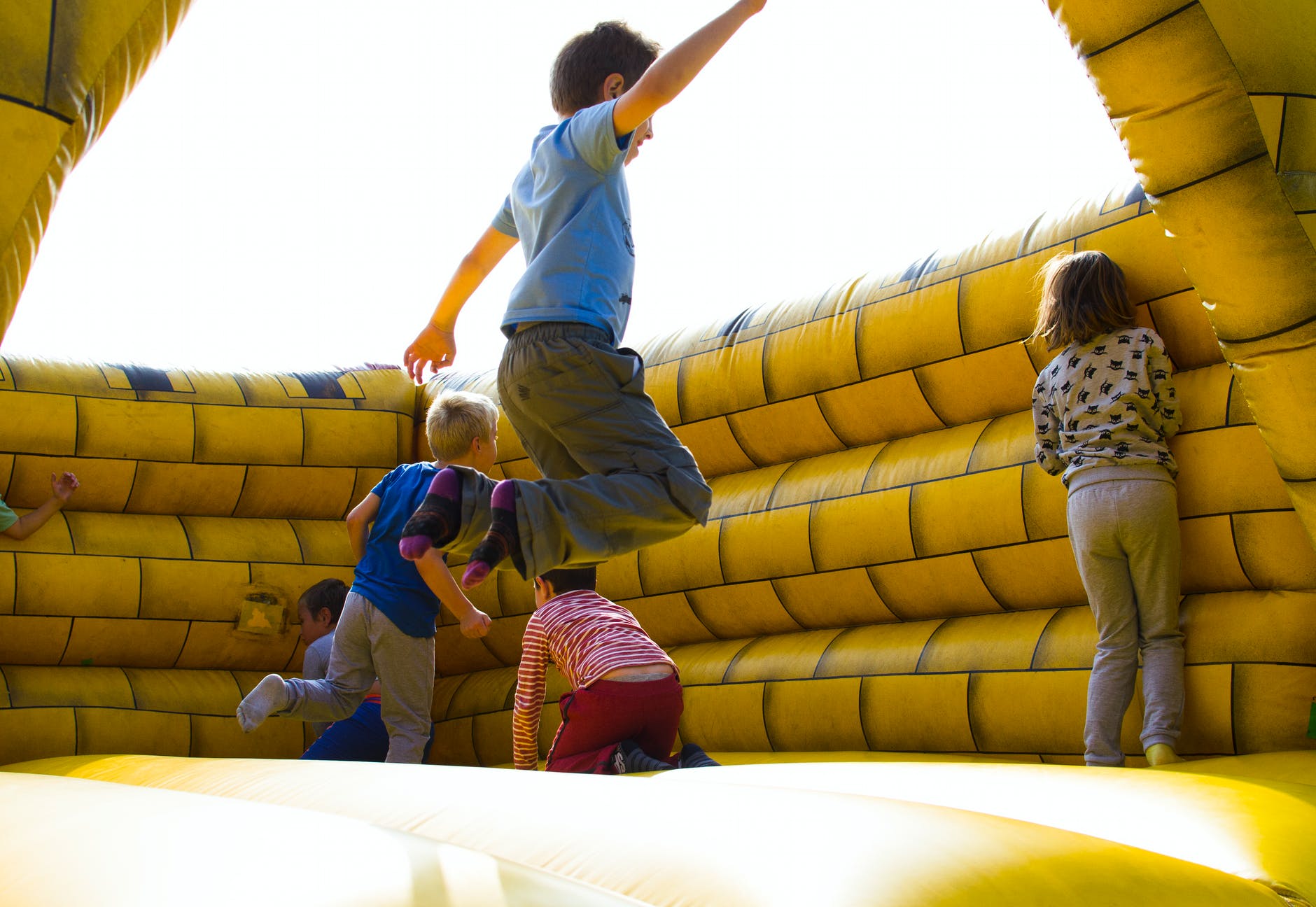
“Mom! Dad! Can I go in the bouncy house, pleeeeeeeezzzzzzeeeee!!”
How many of us have been the recipients of this request at a party or a fair? Our children’s eyes light up with glee and their bodies wriggle in anticipation as they watch their barefooted and sock-footed peers gleefully propelling themselves airborne in brightly-coloured, dancing structures. Who can say no to that pleading face in that air of amusement and excitement? The better question may be, should we say no?
Today reports came out of Tasmania, Australia where five children were killed and other children were injured after a “significant gust of wind” sent a bounce castle and other inflatables, flying through the air, with children falling catastrophically to the ground thirty feet below. This is months after similar incidents happened this year such as what occurred in Arizona in May and in Iceland, then Belarus in July.
We send our sincerest condolences to these families that have suffered such a tragic loss. Unfortunately, such incidents are not uncommon. Here are just a few which have occurred over the years:
- 2011 – 13 children injured in New York
- 2014 – Two incidents within two weeks of each other in New York and Colorado
- 2016 – Fatality in Essex, England
- 2016 – 10 children injured in Texas
- 2017 – 5 children hurt in South Carolina
- 2018 – Bounce house flies away and lands on highway in California
- 2019 – Fatality in Nevada after bounce house flies away and gets caught on power lines.
- 2019 – Two fatalities and 20 injuries in China
These amusements flying away have not been the only cause of injuries either. In 2018, The Journal of Children’s Orthopaedics reported other mechanisms of injuries included falls inside and off of inflatable structures, overcrowding, and collisions between children who differ in age and size. In 2015, the US Consumer Product Safety Commission published a report that identified 113,272 emergency department-treated injuries and 12 deaths related to amusement inflatables during the period 2003 – 2013. These fractures, strains, sprains, dislocations, contusions, abrasions, lacerations, paralysis, and sadly, deaths, were caused by various circumstances including falling badly, suffocation after a motor was accidentally unplugged, and drowning by bouncing out of the inflatable and into a lake or swimming pool. The inflatables that triggered these events were not only bounce castles, but included inflatable slides and other forms of inflatable entertainment as well.
Prevention is Better Than Cure
Is this article saying that bouncing houses should be banned? No. The trajectory is more in line with the recommendations made in the aforementioned study in The Journal of Children’s Orthopaedics. Care needs to be taken at the regulatory and personal levels. In other words, there needs to be national safety guidelines that need to be enacted at the legislative level, higher standards of regulation re manufacturing and safety regulations at the business level, and increased effective adult supervision at the personal level.
Suggestions for prevention in the article include the aforementioned:
- adult supervision,
- rotation of age and size groups,
- age limits and limiting the number of children at a time,
- a safety distance of 3 – 6 feet around the facility leaving entrance and exit points free.
- proper cushioning materials around the inflatable,
- no climbing or hanging from the walls of the facility,
- nothing that would be dangerous to fall on in the perimeter including trees and benches,
- the set-up, operation and supervision of equipment by the inflatable hire company’s own staff,
- the inflatables should be regularly inspected.
- bounce castles, etc should not be used in adverse weather conditions such as high wind or wet weather,
- only socks should be worn on feet,
- no sharp objects should be worn such as jewelry, buckles, pens or other sharp pocket contents,
- and, of course, the castle must always be adequately moored to the ground and away from fences and overhead power.
So now that you have the information, what will you choose to do? Share your views in the comments below. Do you have additional suggestions that you would like to share?

